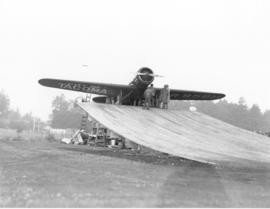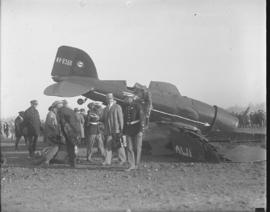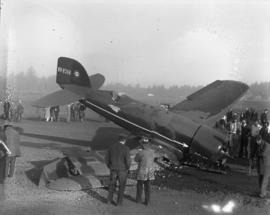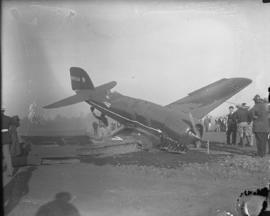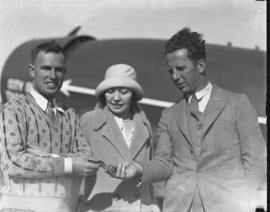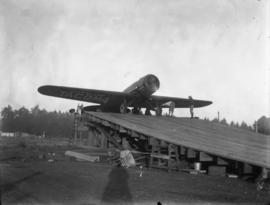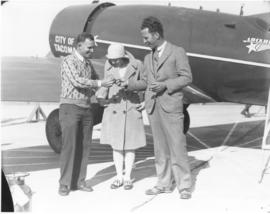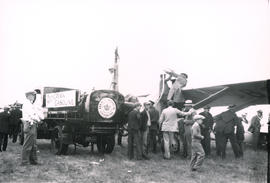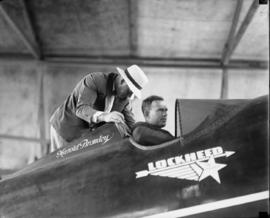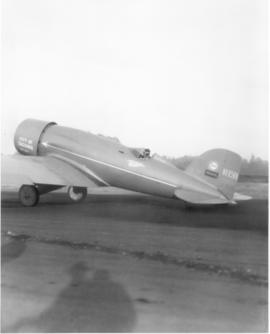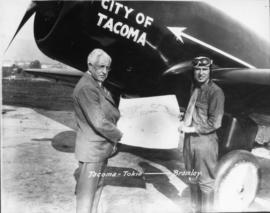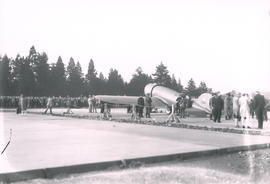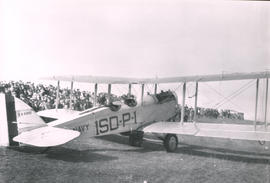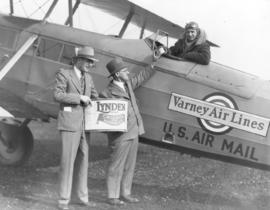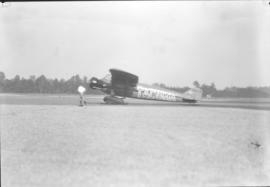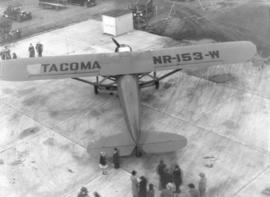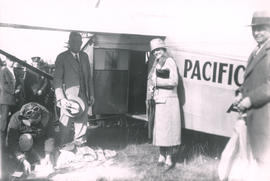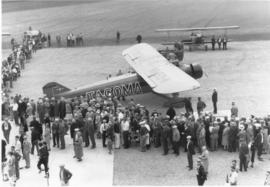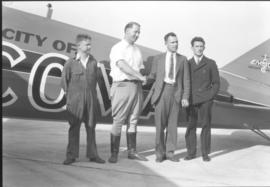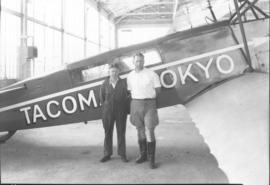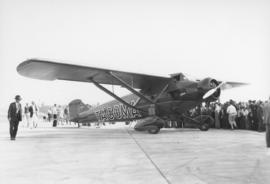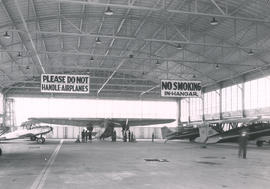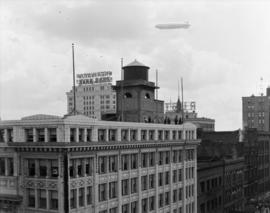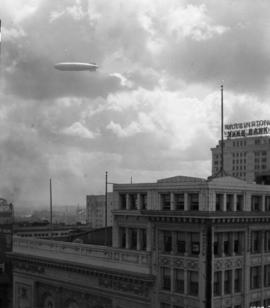- Item
- 1929-07-28
Part of Chapin Bowen Photographs
Harold Bromley's airplane the "City of Tacoma" poised at the top of the ramp prior to its July 28, 1929 take off. Bromley and his plane were financed by a group of Tacoma businessmen, the most voluble being lumber magnate John Buffelen, who wanted to put Tacoma on the map, in the same way that Lindberg made "St. Louis" a household world. The whole city of Tacoma supported the dashing Bromley, even voting a $300,000 bond to build a 5,400 foot air strip. A 100 foot wooden ramp was constructed at the beginning of the runway. The plane was placed at the top of the ramp. When the plane rolled off, it would gain momentum equivalent to another 1,000 feet of runway. At 6:08a.m., the huge monoplane roared down the ramp, veered sharply and crashed about 1,500 feet after its take off.
